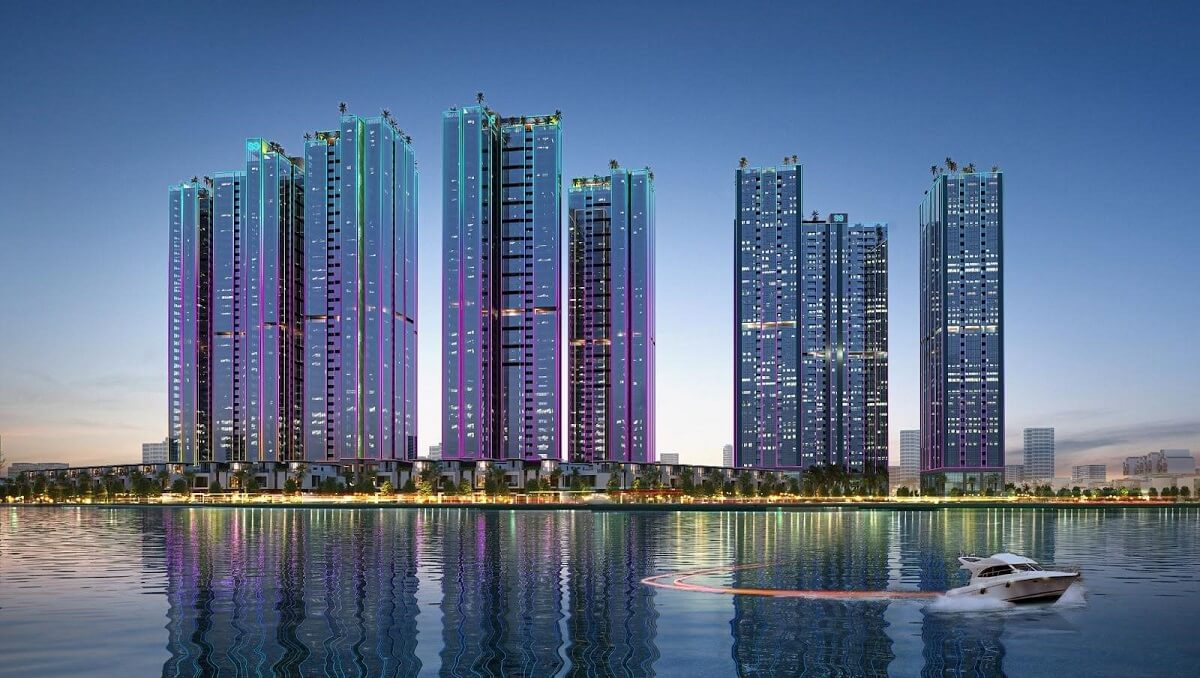To form a number of national-level urban centers in Vietnam by 2030
Forming a number of national-level urban centers in Vietnam by 2030 is the content specified in Decision 143/QD-BXD dated 08/03/2023.

To form a number of national-level urban centers in Vietnam by 2030 (Internet image)
The Minister of Construction of Vietnam issued Decision 143/QD-BXD on March 8, 2023. In order to concretize and effectively implement Resolution 06-NQ/TW and Resolution 148/NQ-CP, the Ministry of Construction promulgates an implementation plan with specific objectives as follows:
1. Forming a number of national-level urban centers in Vietnam by 2030
The specific objectives in Resolution 06-NQ/TW and Resolution 148/NQ-CP related to the functions and tasks of the Ministry of Construction identify:
- By 2025, the national urbanization rate will reach at least 45% and over 50% by 2030. The ratio of urban construction land to the total natural land area will reach about 1.5–1.9% by 2025, about 1.9–2.3% by 2030.
The number of urban centers nationwide by 2025 will be about 950–1,000, and by 2030, about 1,000–1,200.
- By 2025, 100% of existing and new urban centers will have master plans, zoning plans, urban renovation, embellishment, reconstruction, and development programs; ensuring that at least 100% of grade-III urban centers or higher complete the criteria for urban classification in terms of urban infrastructure, especially infrastructure for healthcare, education, training, and urban-level cultural works.
- By 2030, form a number of national and regional urban centers that achieve urban health, education, training, and cultural norms equivalent to the average level of cities in the four leading countries in ASEAN.
The ratio of traffic land to urban construction land will reach about 11–16% by 2025, and 16–26% by 2030. The average green tree area per urban dweller will reach about 6 - 8 m2 by 2025 and about 8–10 m2 by 2030. The average residential floor area per capita in urban areas will be at least 28 m2 by 2025, and at least 32 m2 by 2030.
In addition, the goals of the vision to 2045:
- The urbanization rate is in the middle and high group of ASEAN and Asia.
- The urban system is linked into a synchronous, unified and balanced network between regions and regions, capable of coping with and adapting to climate change, and preventing and combating natural disasters and epidemics; environmental protection, typical architecture rich in identity, green, modern and smart.
- To build at least 5 urban centers of international stature, acting as a focal point for connection and development with regional and international networks. The economic structure of urban areas develops in a modern direction, with green economic sectors and digital economy accounting for a large proportion.
2. Formulating mechanisms and policies on urban development in Vietnam
* Task 17: To study and propose the development of an adjustment law on urban and rural planning.
- Unit in charge: Department of Architectural Planning.
- Coordinating unit: Legal Department and related units.
- Implementation period: Until 2024.
* Task 18: Research and propose the development of an adjustment law on urban management and development.
- Unit in charge: Department of Urban Development.
- Coordinating unit: Legal Department and related units.
- Implementation time: 2025.
* Task 19: Formulate Housing Law (amended)
- Unit in charge: Department of Housing and Real Estate Market Management.
- Coordinating unit: Legal Department and related units.
- Implementation time: 2023.
* Task 20: Formulate the Law on Real Estate Business (amended).
- Unit in charge: Department of Housing and Real Estate Market Management.
- Coordinating unit: Legal Department and related units.
- Implementation time: 2023.
* Task 21: To study and propose developing the law on adjustment of water supply and drainage.
- Unit in charge: Department of Technical Infrastructure.
- Coordinating unit: Legal Department and related units.
- Implementation time: 2025.
* Task 22: Organize the study of the Regulatory Law on underground space management.
- Unit in charge: Department of Technical Infrastructure.
- Coordinating unit: Legal Department and related units.
- Implementation period: until 2025.
* Task 23: Complete the legal framework and appropriate organizational model for the State to manage the real estate market.
- Lead unit: The Department of Housing and Real Estate Market Management will coordinate with the Ministry of Finance.
- Coordinating unit: Legal Department and related units.
- Implementation period: until 2025.
* Task 24: Review, amend, and supplement the system of standards and regulations on planning, construction, management, and sustainable urban development.
- Unit in charge: Department of Science, Technology, and Environment.
- Coordinating unit: relevant units.
- Implementation period: until 2030.
* Mission 25: Control and effectively use the added value from land when urban infrastructure, especially transport infrastructure, is invested to expand and exploit the land fund on both sides of the road to generate income for the city.
- Unit in charge of coordinating with the Ministry of Finance when required: Department of Construction Economics.
- Coordinating unit: Department of Urban Development, Department of Technical Infrastructure, Department of Architecture Planning, and Institute of Construction Economics.
- Implementation period: until 2025.
More details can be found in Vietnam's Decision 143/QD-BXD issued on March 8, 2023.
Vo Van Hieu
- Key word:
- national-level urban centers in Vietnam
- Guidelines for maintenance and renovation of villas in Ho Chi Minh City
- Guidelines for maintenance and renovation of villas in Ho Chi Minh City
- Resolution 190: Principles for addressing certain issues related to the organization and arrangement of state apparatus in Vietnam
- Guidance on identifying cases of inaccurate or non-operational electricity meters in Vietnam
- Official Telegram 16: Urgent requirement to allocate the entire state budget investment plan in 2025 in Vietnam
- Prime Minister of Vietnam directs to accelerate allocation and disbursement of public investment capital in 2025 in Vietnam
-

- Guidelines for maintenance and renovation of villas ...
- 14:30, 21/02/2025
-

- Guidelines for maintenance and renovation of villas ...
- 14:30, 21/02/2025
-

- Procedures for high school admission in Vietnam
- 14:25, 21/02/2025
-

- Resolution 190: Principles for addressing certain ...
- 11:30, 21/02/2025
-

- Guidance on identifying cases of inaccurate or ...
- 11:00, 21/02/2025
 Article table of contents
Article table of contents
